Abstract
Despite the persistence of spherocytosis after splenectomy in hereditary spherocytosis, it has usually been assumed that red cell life span returns completely to normal after this treatment. Diisopropyl fluorophosphate. DF32P, a noneluting red cell label, was given intravenously to 11 patients in five unrelated families 2-27 yr after splenectomy for typical hereditary spherocytosis. Hemoglobin ranged from 14.0 to 19.8 g/100 ml in this group and reticulocytes from 1.1 to 2.9%, showing the excellent clinical response to splenectomy. Loss of red cell radioactivity corrected for radiophosphorus decay was linear with time during the 60-70 days of the study. Red cell survival as indicated by this rate of loss was 96 ± 13 days (range 76-118 days), significantly less than the 123 ± 14 days observed with the same method in 12 persons with normal red cells (P < 0.0005). I conclude that splenectomy does not eliminate the decreased red cell survival in hereditary spherocytosis. The residual 22% decrease in red cell survival is clinically unimportant, but it must be considered in evaluation of biochemical differences observed in hereditary spherocytic red cells.
Full text
PDF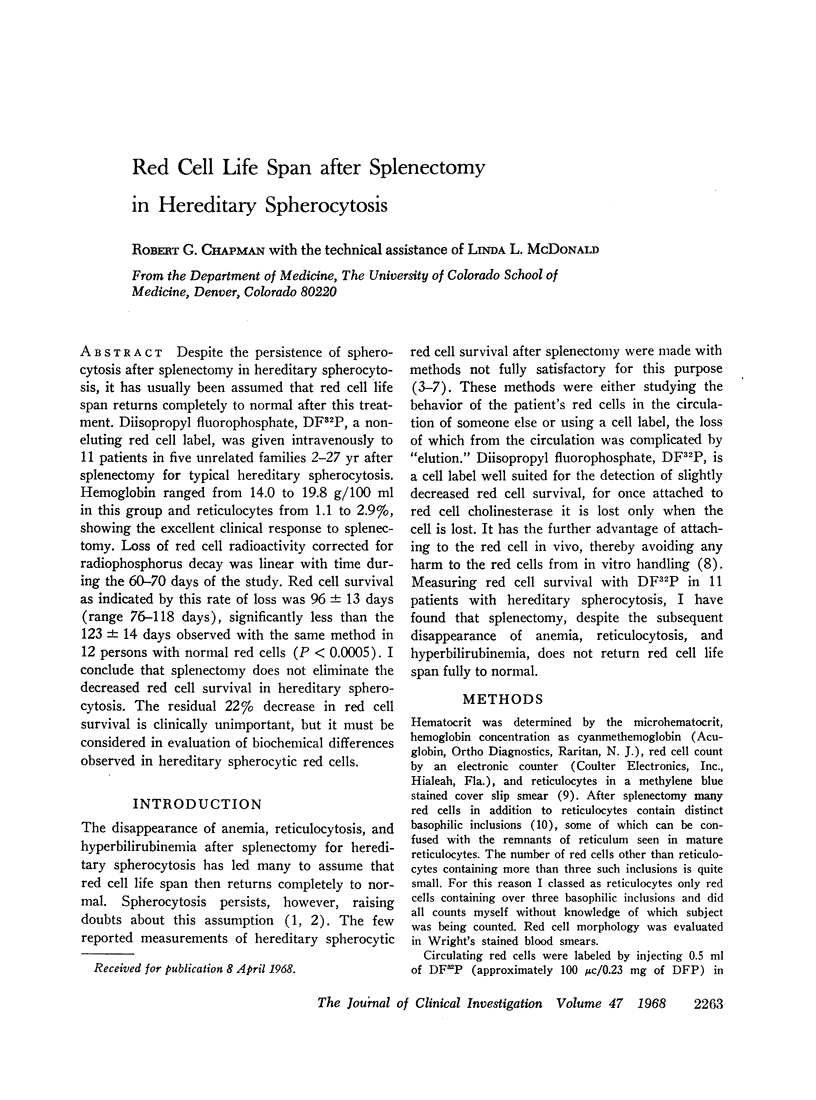
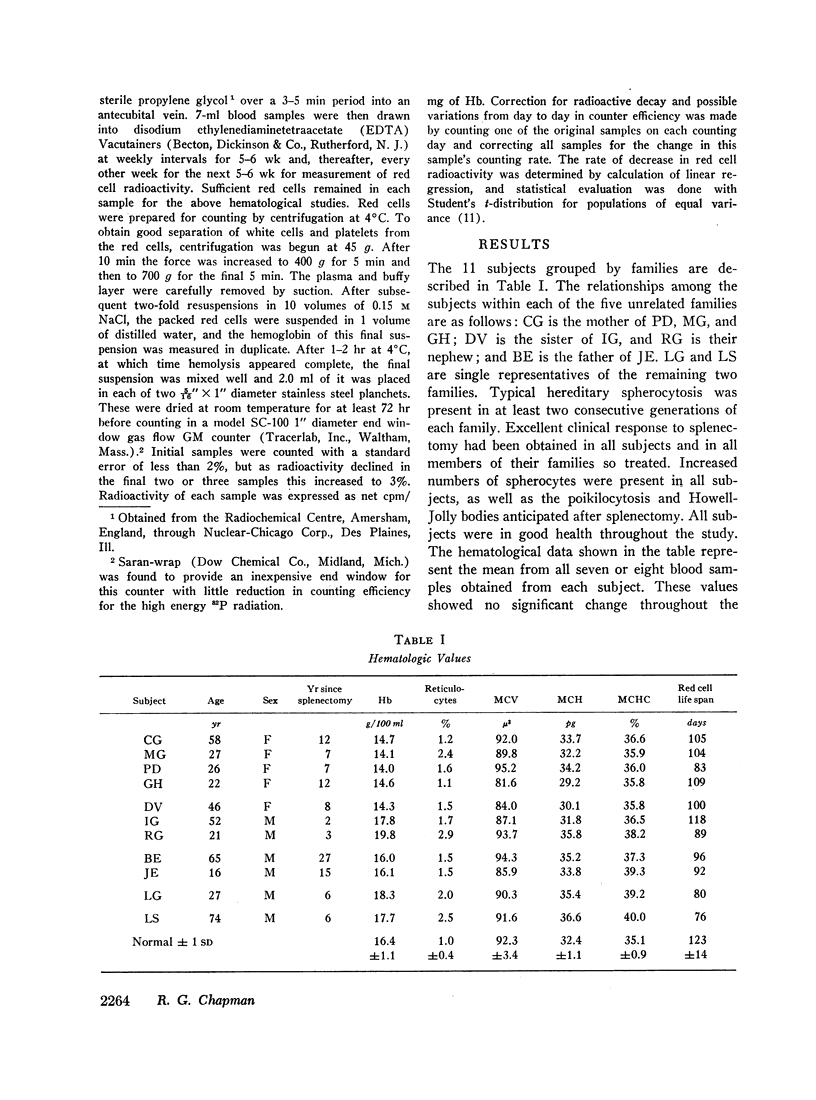
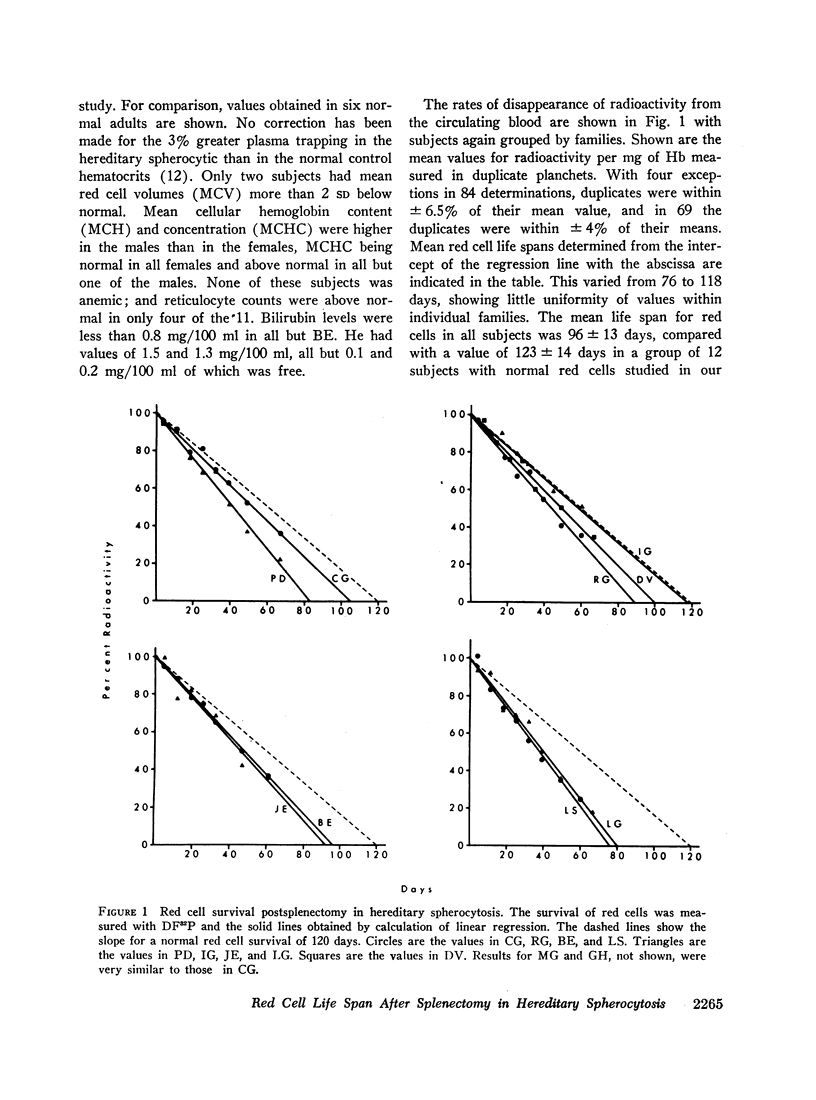
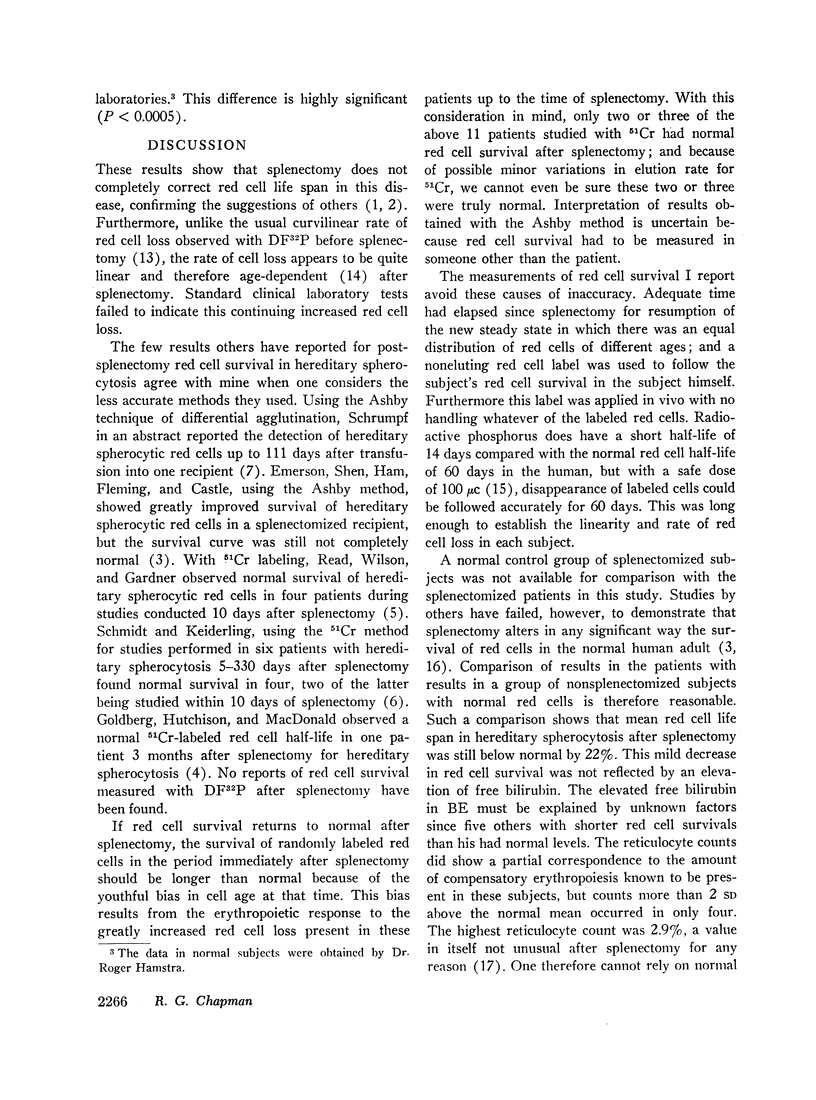
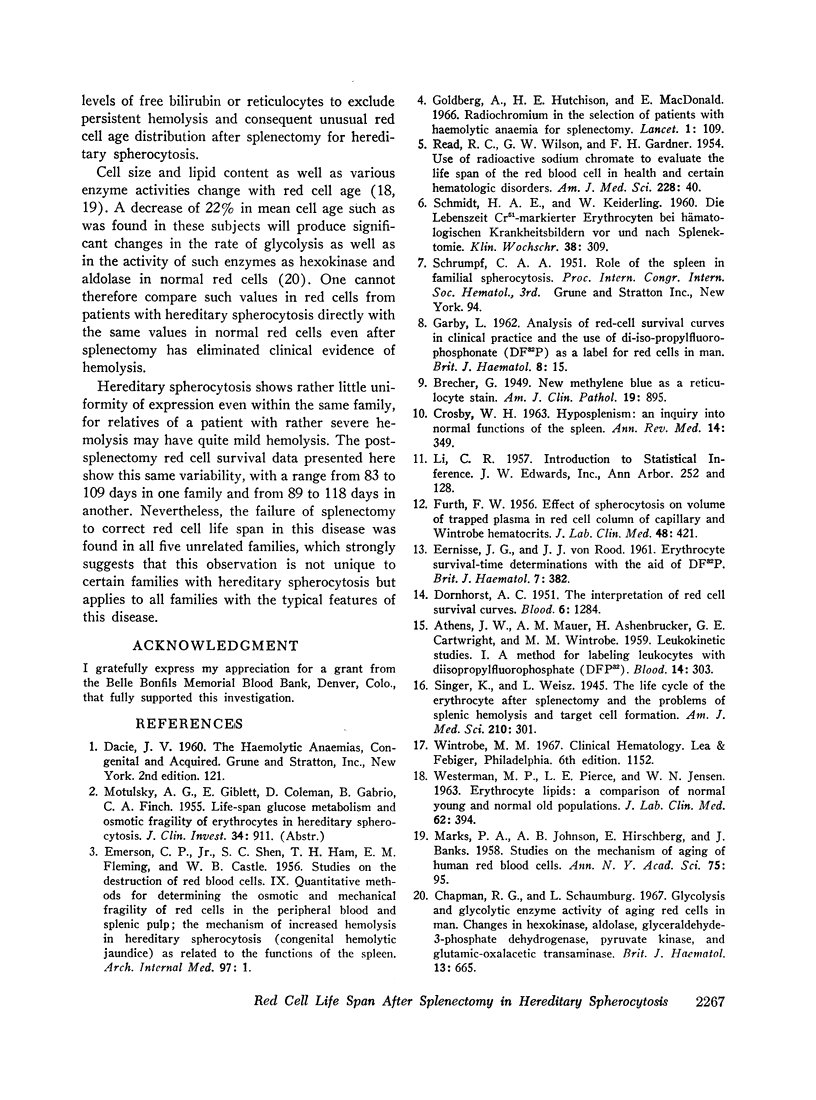
Selected References
These references are in PubMed. This may not be the complete list of references from this article.
- ATHENS J. W., MAUER A. M., ASHENBRUCKER H., CARTWRIGHT G. E., WINTROBE M. M. Leukokinetic studies. I. A method for labeling leukocytes with diisopropyl-fluorophosphate (DFP32). Blood. 1959 Apr;14(4):303–333. [PubMed] [Google Scholar]
- CROSBY W. H. Hyposplenism: an inquiry into normal functions of the spleen. Annu Rev Med. 1963;14:349–370. doi: 10.1146/annurev.me.14.020163.002025. [DOI] [PubMed] [Google Scholar]
- Chapman R. G., Schaumburg L. Glycolysis and glycolytic enzyme activity of aging red cells in man. Changes in hexokinase, aldolase, glyceraldehyde-3-phosphate dehydrogenase, pyruvate kinase and glutamic-oxalacetic transaminase. Br J Haematol. 1967 Sep;13(5):665–678. doi: 10.1111/j.1365-2141.1967.tb08832.x. [DOI] [PubMed] [Google Scholar]
- DORNHORST A. C. The interpretation of red cell survival curves. Blood. 1951 Dec;6(12):1284–1292. [PubMed] [Google Scholar]
- EERNISSE J. G., van ROOD J. Erythrocyte survival-time determinations with the aid of DF32P. Br J Haematol. 1961 Jul;7:382–404. doi: 10.1111/j.1365-2141.1961.tb00348.x. [DOI] [PubMed] [Google Scholar]
- FURTH F. W. Effect of spherocytosis on volume of trapped plasma in red cell column of capillary and Wintrobe hematocrits. J Lab Clin Med. 1956 Sep;48(3):421–430. [PubMed] [Google Scholar]
- GARBY L. Analysis of red-cell survival curves in clinical practice and the use of di-iso-propylfluorophosphonate (DF32P) as a label for red cells in man. Br J Haematol. 1962 Jan;8:15–27. doi: 10.1111/j.1365-2141.1962.tb06490.x. [DOI] [PubMed] [Google Scholar]
- Goldberg A., Hutchison H. E., MacDonald E. Radiochromium in the selection of patients with haemolytic anaemia for splenectomy. Lancet. 1966 Jan 15;1(7429):109–114. doi: 10.1016/s0140-6736(66)91256-6. [DOI] [PubMed] [Google Scholar]
- MARKS P. A., JOHNSON A. B., HIRSCHBERG E., BANKS J. Studies on the mechanism of aging of human red blood cells. Ann N Y Acad Sci. 1958 Oct 13;75(1):95–105. doi: 10.1111/j.1749-6632.1958.tb36853.x. [DOI] [PubMed] [Google Scholar]
- READ R. C., WILSON G. W., GARDNER F. H. The use of radioactive sodium chromate to evaluate the life span of the red blood cell in health and certain hematologic disorders. Am J Med Sci. 1954 Jul;228(1):40–52. doi: 10.1097/00000441-195407000-00005. [DOI] [PubMed] [Google Scholar]
- WESTERMAN M. P., PIERCE L. E., JENSEN W. N. ERYTHROCYTE LIPIDS: A COMPARISON OF NORMAL YOUNG AND NORMAL OLD POPULATIONS. J Lab Clin Med. 1963 Sep;62:394–400. [PubMed] [Google Scholar]


